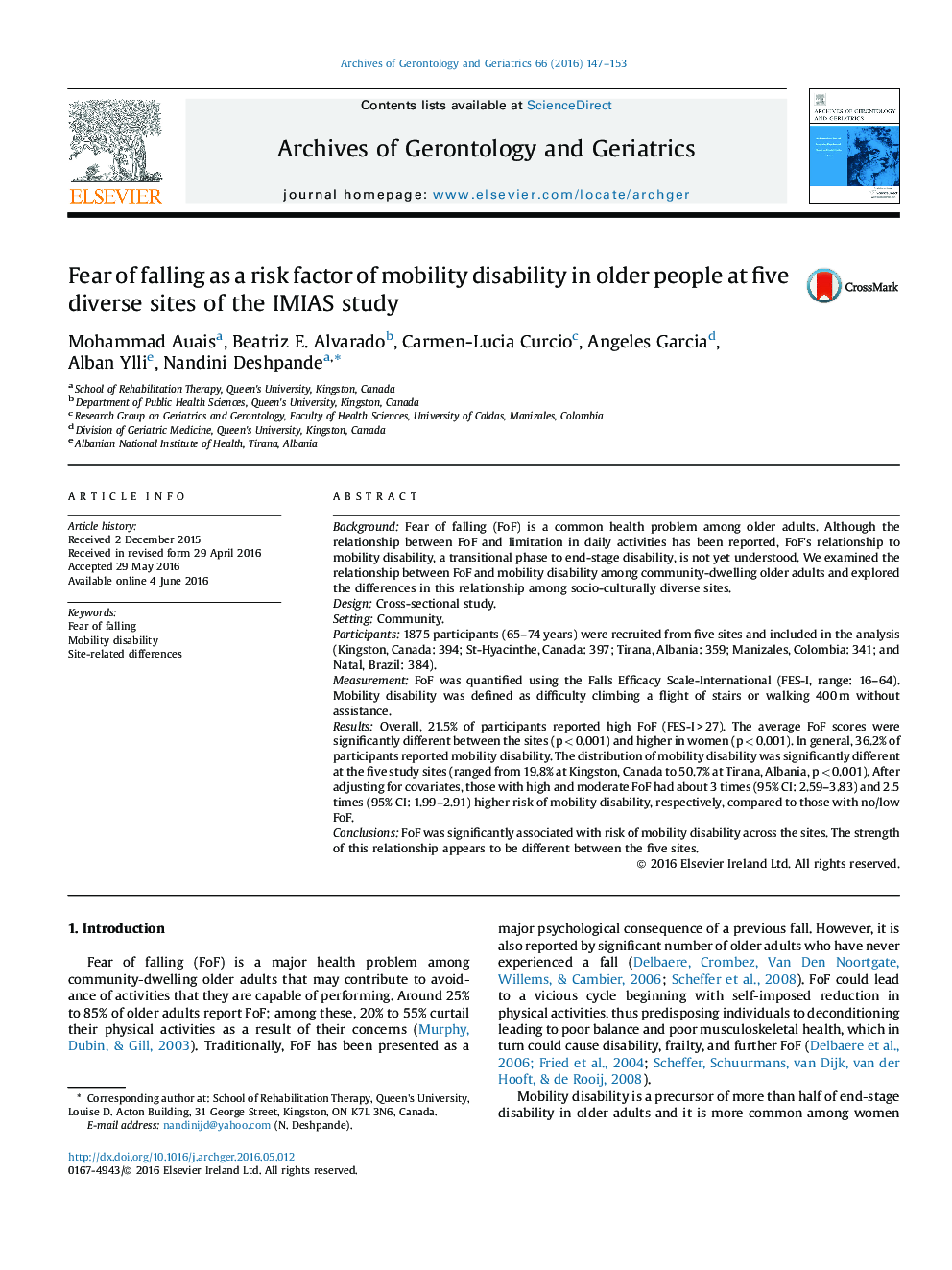| کد مقاله | کد نشریه | سال انتشار | مقاله انگلیسی | نسخه تمام متن |
|---|---|---|---|---|
| 1902652 | 1534423 | 2016 | 7 صفحه PDF | دانلود رایگان |
• Fear of falling was associated with mobility disability across widely diverse sites (even after accounting for potential confounders).
• FoF characteristics (e.g. severity of FoF as indicated by the total score) were site-specific.
• Prevention of FoF may prevent transition to disability.
• Prevention of FoF starts with understanding who is at risk and how risk can be mitigated.
BackgroundFear of falling (FoF) is a common health problem among older adults. Although the relationship between FoF and limitation in daily activities has been reported, FoF’s relationship to mobility disability, a transitional phase to end-stage disability, is not yet understood. We examined the relationship between FoF and mobility disability among community-dwelling older adults and explored the differences in this relationship among socio-culturally diverse sites.DesignCross-sectional study.SettingCommunity.Participants1875 participants (65–74 years) were recruited from five sites and included in the analysis (Kingston, Canada: 394; St-Hyacinthe, Canada: 397; Tirana, Albania: 359; Manizales, Colombia: 341; and Natal, Brazil: 384).MeasurementFoF was quantified using the Falls Efficacy Scale-International (FES-I, range: 16–64). Mobility disability was defined as difficulty climbing a flight of stairs or walking 400 m without assistance.ResultsOverall, 21.5% of participants reported high FoF (FES-I > 27). The average FoF scores were significantly different between the sites (p < 0.001) and higher in women (p < 0.001). In general, 36.2% of participants reported mobility disability. The distribution of mobility disability was significantly different at the five study sites (ranged from 19.8% at Kingston, Canada to 50.7% at Tirana, Albania, p < 0.001). After adjusting for covariates, those with high and moderate FoF had about 3 times (95% CI: 2.59–3.83) and 2.5 times (95% CI: 1.99–2.91) higher risk of mobility disability, respectively, compared to those with no/low FoF.ConclusionsFoF was significantly associated with risk of mobility disability across the sites. The strength of this relationship appears to be different between the five sites.
Journal: Archives of Gerontology and Geriatrics - Volume 66, September–October 2016, Pages 147–153
